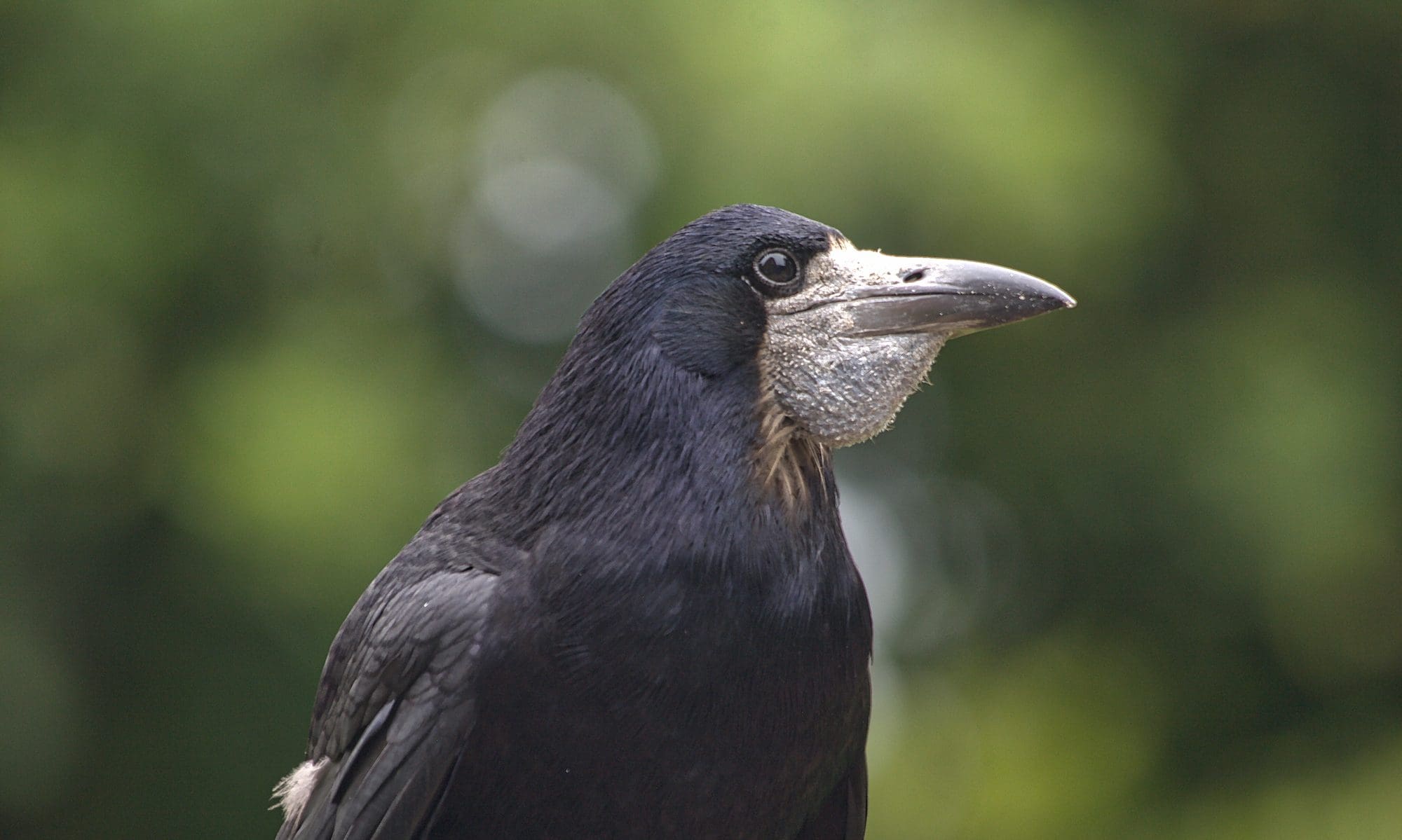Although corvids are generally known as scavengers and omnivores, the diet of the different corvids species does vary considerably, from species to species, and over the seasons of the year. Only about 40% of the rooks’ diet for example consists of animal protein, and those being mainly worms, bugs and larvae. They usually don’t eat carrion, as their beak is not designed and able to rip animal carcasses into manageable pieces. The remaining 60% of the rooks’ diet are plant-based products like fruits, seeds and vegetables. During the winter time, carrion crows prefer seeds, berries and carrion, whilst during the summertime they do mainly live on animal protein like snails, worms, insects, small mammals and eggs.

Hatchlings And Nestlings Up To 3 Weeks
When raising hatchling corvids it is important to feed a purely insect based diet for the first two weeks of their lives. Ideally these birds should be fed on an insect mash consisting of the following ingredients:
- Frozen fresh insects like crickets and wax worms
- Mineral and vitamin mixture like Korvimin ZVT+Reptile (WDT)
- Boiled egg yolk
- Soaked NutriBird Bird Complete pellets (Versele-Laga)
- Minced beef
- Small amounts of feathers and fur should be added to the mash occasionally, but only when the bird is older than 2 weeks, which will help to produce pellets
Alternatively one can also create a baby food mixture (Modified recipe, original recipe by Samantha Bedford of Bedfordshire Wildlife Rescue) based on the following ingredients:
- 2 parts ground up (80%) chicken biscuits (Applaws Kitten Food Chicken)
- 1 part Hagen Tropicana Breeding Mash
- 1 part Heath’s Prosecto Insectivorous Soft Food
- Dried ants, flies and daphnia
- Korvimin ZVT+Reptile by WDT (Nutrobal for Birds by Vetark)
- Bene-Bac Powder for Birds and Reptiles by PetAg (AviPro Plus by Vetark)

Nestlings Older Than 3 Weeks
When the bird turns 3 weeks, we would start reducing the amount of mash and introduce soaked cat biscuits in addition to the mash fed, which are of an ideal consistency and therefore easy to use for hand feeding. GoCat Chicken and Duck Complete pet food for adult cats (Purina) is well suited for corvids, as it provides the needed high protein contents required. It contains 20% rehydrated meat and animal derivatives, with a minimum 4% chicken and 4% duck (30.0% protein, 10.0% fat content). Tinned dog or cat foods are not a suitable diet for corvids and will most likely cause diarrhoea.

Fledglings
When the birds have fledged, a broader variety of food items will be added to the daily corvid menu, which will be provided in addition to hand feeding in a dish to encourage self feeding. Food will be supplemented with Korvimin ZVT+Reptile by WDT (Nutrobal for Birds by Vetark) to avoid a calcium deficiency. Alternatively one could also grind thoroughly cleaned empty snail shells, which make a good cheap, natural and easily digestible calcium supplement. The basic diet plan for all corvid species consists of:
- Soaked cat biscuits (GoCat Chicken and Duck Complete pet food for adult cats (Purina)
- Minced beef
- Vegetables (fresh corn or maize, corn on the cob or peas)
- Fruits (berries, grapes, apple or pear)
- Scottish Rough Oatcakes
- Good quality bird food seed mix enriched with peanuts, suet pellets and dried meal worms
- Live meal worms (larval form of the mealworm beetle – tenebrio molitor) and wax worms (larval form of the wax moth – galleria mellonella)
- Dead or frozen fresh insects like crickets, calci–worms (larval form of the black soldier fly hermetia illucens) or natural pinkies (larval forms of bottle flies)
- Hazelnuts or walnuts for jays
- Occasional food items in particular for crows include dead mice, day old chicks, raw pigeon eggs and cuttle fish bone
Worms and snails must not to be fed to corvids, although being part of their natural diet, as they are carriers of coccidia and worms. Although birds are being encouraged to feed themselves, assisted hand feeding needs to continue until the birds are completely weaned. Fledglings should also be moved into a suitable and spacious aviary, where they can learn to forage and are able to cache food.


